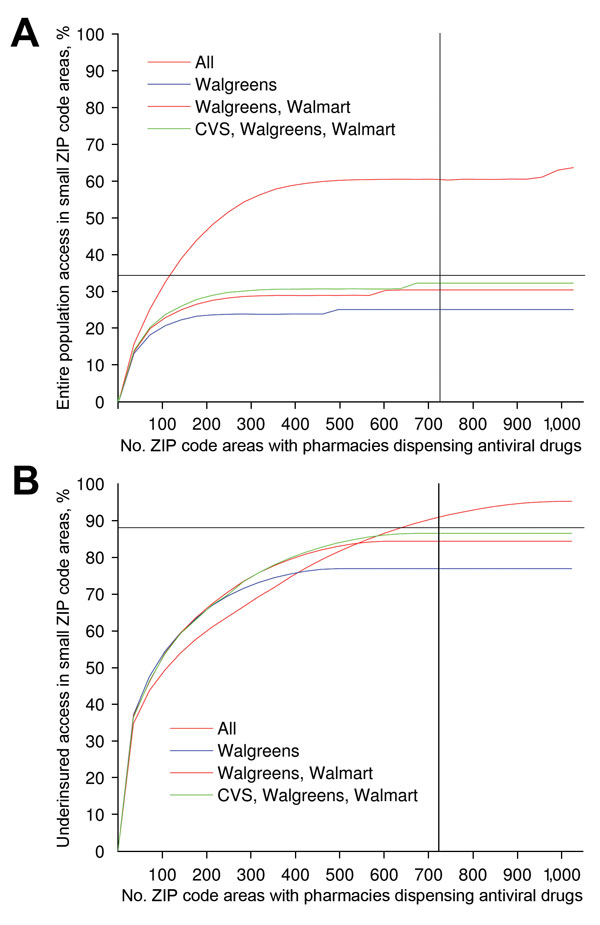Volume 21, Number 2—February 2015
Research
Optimizing Distribution of Pandemic Influenza Antiviral Drugs
Figure 2

Figure 2. Antiviral drug access in underinsured populations achieved by the Texas antiviral drug distribution network during the 2009 influenza A pandemic and by optimized antiviral drug distribution networks, for A) small ZIP code (US postal code) areas (i.e., ZIP code areas with <1,000 underinsured persons) and B) statewide. Access is the expected fraction of the underinsured population willing to travel to the nearest dispensing pharmacy to obtain antiviral drugs. The black vertical and horizontal lines indicate the number of ZIP code areas that participated in the Texas 2009 distribution network and the estimated access achieved, respectively. For each network size (number of dispensing ZIP code areas), a hybrid optimization was performed to maximize coverage in small ZIP code areas and overall (see Methods for details). Color indicates which combination of 13 major pharmacy chains plus independents were considered in the optimization. For a distribution network of size 723 (comparable to the Texas 2009 H1N1 antiviral drug distribution), the best performing single-chain (Walgreens), 2-chain combination (Walgreens and Walmart), and 3-chain combination (Walgreens, Walmart, and CVS) provided near optimal coverage statewide, but critically underserved the smallest ZIP code areas.